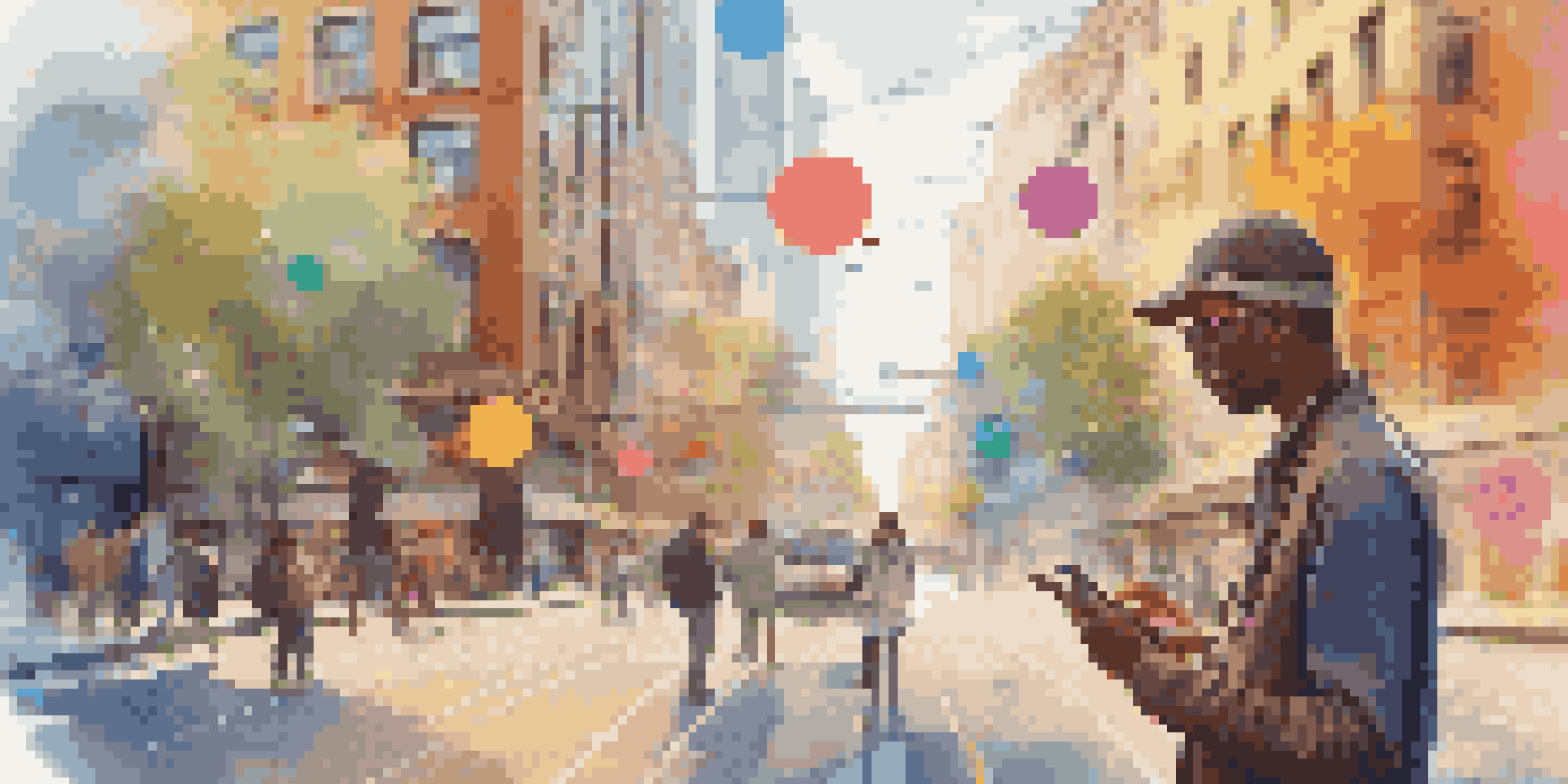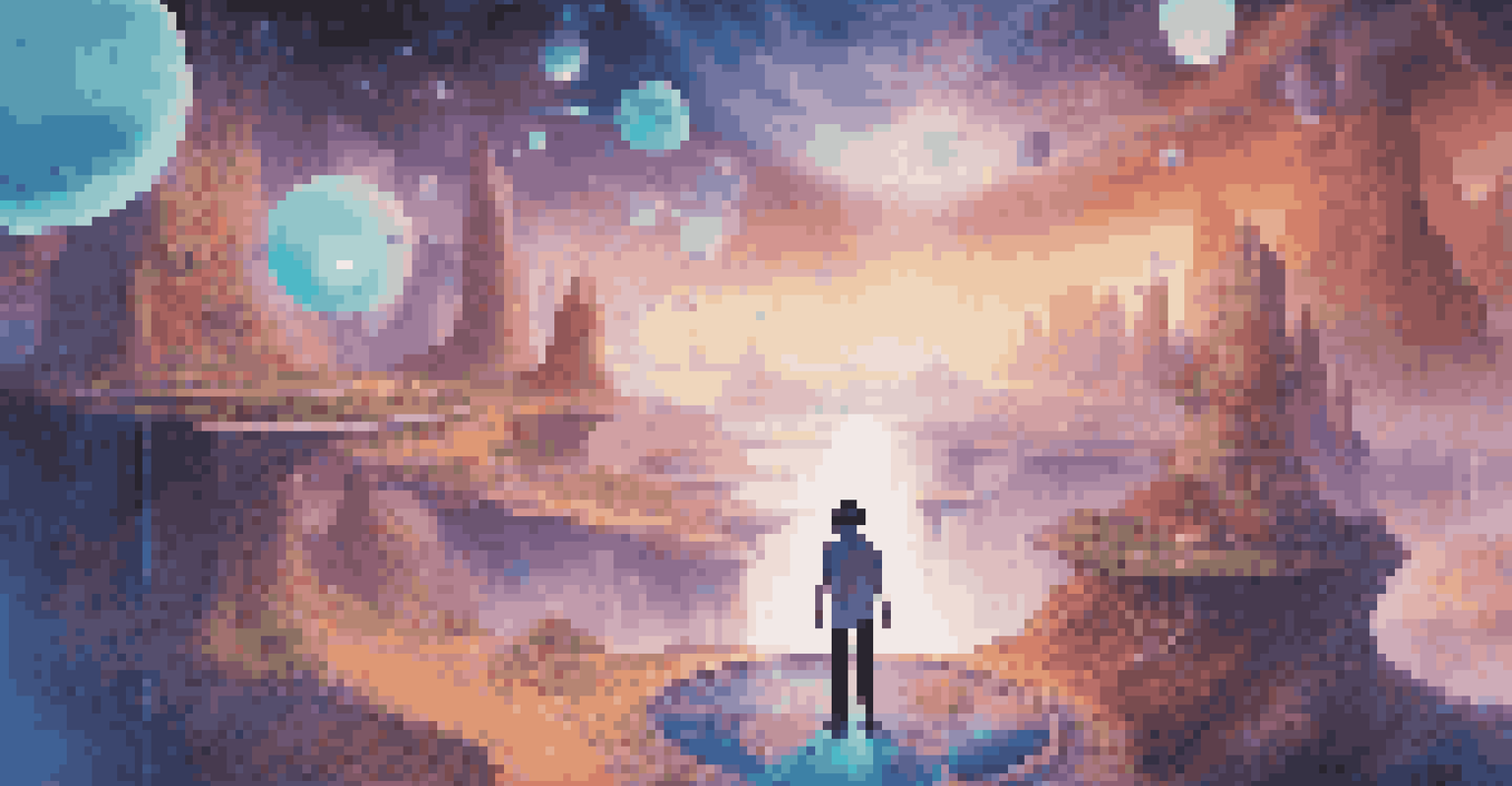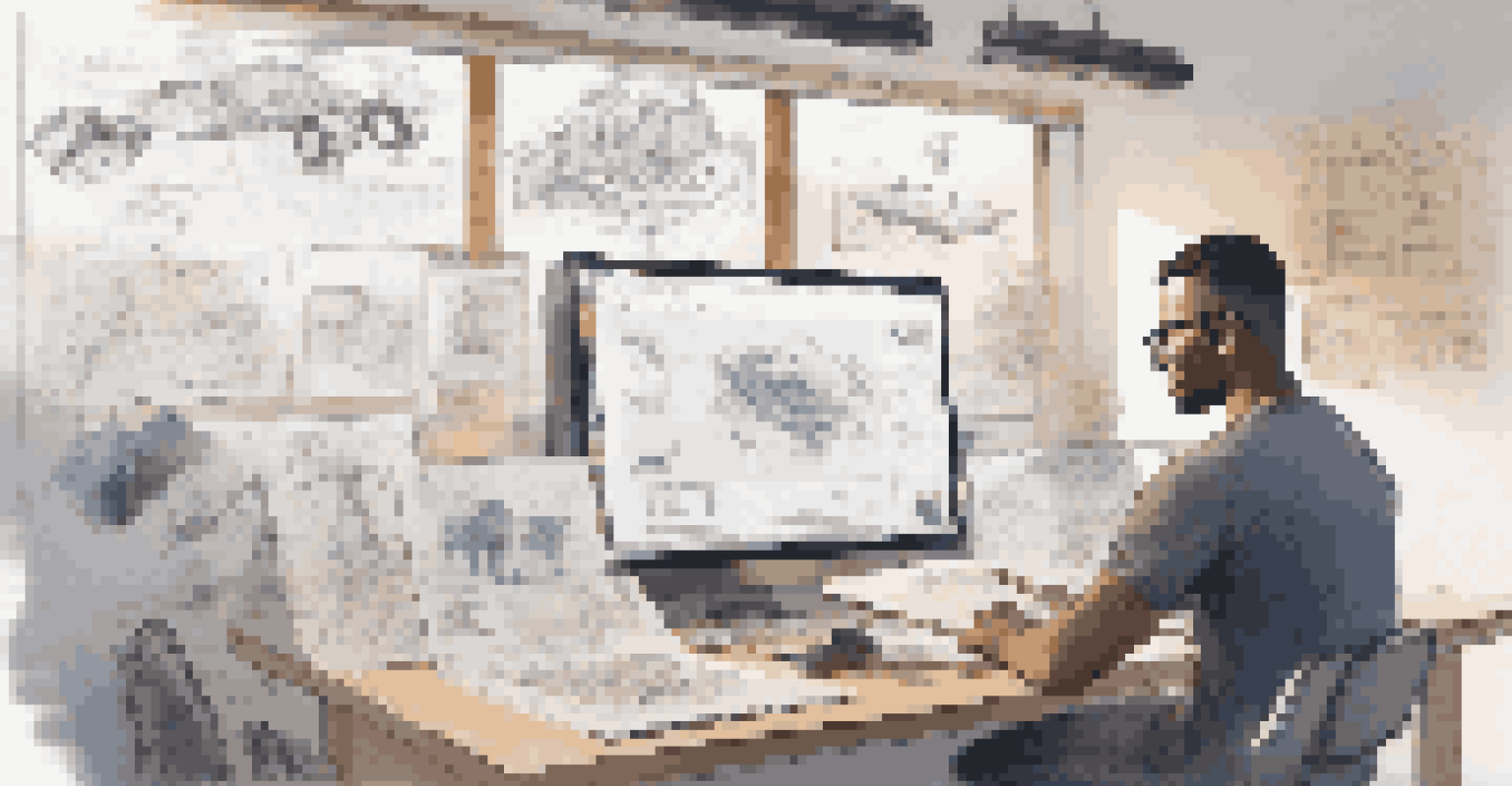Exploring User Experience Design in AR and VR Applications

Understanding the Basics of AR and VR Technologies
Augmented Reality (AR) and Virtual Reality (VR) are transforming how we interact with digital content. AR overlays digital information onto the real world, while VR immerses users in a completely virtual environment. This distinction is crucial for UX designers, as it influences how they approach user interactions and experience design.
The future of technology is not about the gadget, but about the user experience.
Both technologies rely on hardware like headsets or mobile devices, but the user experience can vary significantly. For instance, in AR, the challenge is to blend the virtual with the physical seamlessly, whereas in VR, total immersion requires careful design to prevent disorientation. Understanding these nuances is the first step in crafting effective experiences.
As these technologies evolve, so must our understanding of how users engage with them. UX designers need to consider how users perceive their surroundings and how they interact with both real and virtual elements to create intuitive, engaging experiences.
The Role of User Experience Design in AR and VR
User Experience (UX) design is all about creating meaningful interactions between users and products. In the realm of AR and VR, this means designing experiences that are not only functional but also enjoyable and engaging. A well-designed UX can significantly enhance the effectiveness of an AR or VR application, making it memorable and impactful.

In AR applications, UX designers must think about how users will navigate through their physical environment while interacting with digital content. This might involve ensuring that virtual elements are easy to see and interact with, without overwhelming the user. For VR, the focus shifts to creating a sense of presence, where users feel genuinely 'inside' the virtual world.
AR vs. VR: Key Differences
Understanding the distinction between Augmented Reality (AR) and Virtual Reality (VR) is essential for UX designers to create effective user interactions.
By prioritizing user experience, designers can address common challenges in AR and VR, such as motion sickness or confusion about how to interact with virtual elements. This focus leads to more successful applications that users want to keep coming back to.
Key Principles of UX Design for AR and VR Applications
Designing for AR and VR requires a unique set of principles compared to traditional web or mobile applications. One key principle is the importance of intuitive navigation. Users should easily understand how to interact with their environment, whether that's pointing their device at an object in AR or using hand gestures in VR.
Design is not just what it looks like and feels like. Design is how it works.
Another vital principle is feedback. In both AR and VR, users need immediate and clear responses to their actions. For example, if a user selects an object in AR, they should receive visual or auditory confirmation that their action was successful, creating a satisfying interaction.
Lastly, designers must consider accessibility. Ensuring that AR and VR experiences are usable for people with varying abilities is crucial. This might involve offering voice commands or adjustable settings to cater to different user needs, thereby creating a more inclusive experience.
Challenges in UX Design for AR and VR
Designing for AR and VR comes with its fair share of challenges. One major challenge is the varying levels of user familiarity with these technologies. Some users might be experts, while others are just starting. Designers must create experiences that cater to both ends of the spectrum, ensuring that everyone can enjoy and effectively use the application.
Another significant challenge is the physical space users occupy. In AR, the real world can be unpredictable, which means designers must consider how their virtual overlays will interact with real-world objects. For VR, space constraints can affect how users interact with the virtual environment, leading to potential discomfort or frustration.
User Experience is Essential
Prioritizing user experience in AR and VR applications ensures that interactions are engaging, intuitive, and accessible for all users.
To overcome these challenges, UX designers often conduct extensive user testing. By observing how real users interact with their designs, they can identify pain points and make necessary adjustments, leading to a more polished and user-friendly experience.
User Testing: A Crucial Element in UX Design
User testing is a fundamental aspect of UX design, especially in the context of AR and VR. It involves gathering feedback from real users to understand their experiences with a product. This feedback is invaluable for identifying usability issues and refining the design before launch.
In the case of AR and VR, user testing can take on unique forms. For instance, testers might be asked to perform specific tasks within a virtual environment, allowing designers to observe how they navigate and interact. This direct observation can reveal insights that surveys or interviews might miss.
By prioritizing user testing, designers can ensure that their applications are not just visually appealing but also functional and intuitive. This process ultimately leads to creating experiences that resonate with users and meet their needs effectively.
The Future of UX Design in AR and VR Applications
As technology continues to advance, the future of UX design in AR and VR is incredibly promising. Emerging technologies, such as artificial intelligence and machine learning, are poised to enhance user experiences even further. For example, AI can personalize interactions based on user behavior, making experiences feel more tailored and engaging.
Moreover, as AR and VR hardware becomes more accessible, the demand for well-designed applications will likely increase. This presents an excellent opportunity for UX designers to explore innovative concepts and push the boundaries of what these technologies can achieve.
Challenges Demand User Testing
Conducting user testing helps designers address the unique challenges of AR and VR, leading to more polished and user-friendly experiences.
Ultimately, the future of UX design in AR and VR will hinge on creating seamless, intuitive experiences that enhance our interaction with both the digital and physical worlds. As more designers enter this space, we can expect to see exciting developments that redefine how we engage with technology.
Conclusion: Embracing UX Design in AR and VR
In conclusion, user experience design plays a crucial role in shaping the effectiveness of AR and VR applications. By understanding the unique challenges and opportunities these technologies present, designers can create immersive experiences that captivate users. From intuitive navigation to thoughtful user testing, every aspect of UX design contributes to the overall success of an application.
As AR and VR continue to evolve, the need for skilled UX designers will only grow. Embracing the principles of user-centered design will ensure that these technologies enhance user engagement and satisfaction. This approach not only benefits users but also contributes to the overall success of AR and VR applications in the marketplace.

In a world where digital experiences are becoming increasingly significant, focusing on user experience in AR and VR is not just a trend—it's a necessity. By prioritizing UX design, we can shape a future where technology enriches our lives in meaningful ways.